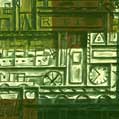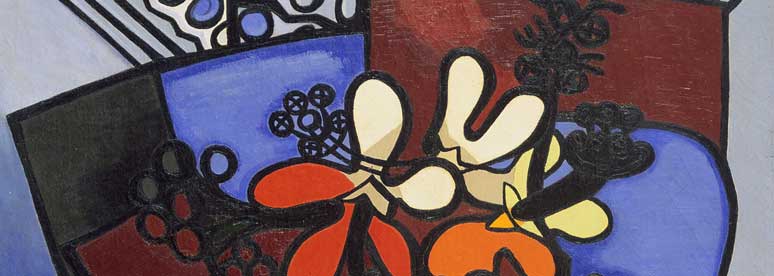PAST EXHIBITION

Highlights of the Permanent Collection
January 24, 2003 – March 9, 2003
MORE ON THE PERMANENT COLLECTION
Click here to view
ABOUT THE EXHIBIT
When the museum was founded in 1976, the permanent collection numbered 250. Today, close to 2000 paintings, sculptures, drawings, and installations make it one of the most comprehensive collections of Latin-American and Caribbean art in the United States. Like most of the present-day programs in the museum, its roots are in the former Visual Arts Unit of the Organization of American States (OAS). Today, works by artists such as Pedro Figari, Emilio Pettoruti, Amelia Pelaez, Joaquin Torres-Garcia, Roberto Matta, Alejandro Obregon, Fernando de Szyszlo, Edgar Negret, Fernando Botero, and Jesus Rafael Soto highlight the ever-growing collection.
The last century has seen a progressive artistic evolution throughout South and Central America. In Colombia, Alejandro Obregon produced compositions of exuberant color with fragmented - but structurally articulate – human forms. Also in Colombia, Fernando Botero created dialogues about the values and institutions of bourgeois society, portraying its members as overstuffed giants. In Venezuela, Jesus Rafael Soto produced dynamic movement in his “kinetic” works.
Meanwhile, Cuban artist Amelia Pelaez reinvented ambient reality, recalling the architectural moldings and stained-glass windows of old Havana in her work. Along with a handful of other Cubans who came into their own during the 1920s, Pelaez brought Cuban art into the 20th century, believing that the artist should have complete freedom to reinvent and represent ambient reality.
Elsewhere, the Chilean master Roberto Matta came to recognize the cosmic character of experience through his encounter with the Surrealists in Paris in 1937. Structure became fundamental to his work, and after relocating to New York in 1939, he had undoubted influence on the coming generation of American Abstract Expressionists.
The work of Pedro Figari constitutes a sort of visual chronicle of Uruguayan life and tradition, part historical, part fanciful, narrated with the freedom that derives from French Postimpressionism. In the 1920s and 1930s, Figari produced some three thousand oils on cardboard, covering Uruguayan social topics, landscapes, colonial patios, folk dances, country women, and gauchos.
Also from Uruguay, Joaquin Torres-Garcia produced “Constructivist Composition” in 1943, impassioned by “geometry, order, synthesism, construction, and rhythm.” His composition of right angles and parallel lines indeed calls for a second reading.

